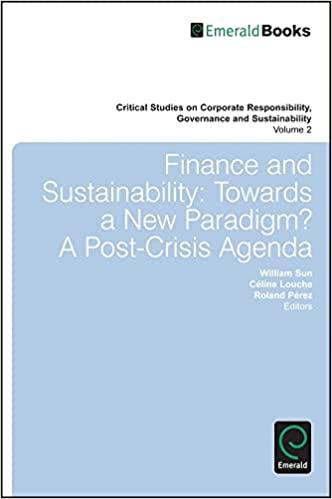Question
You are considering replacing a current machine with a new machine that has an 8-year life. The purchase price of the new machine is $635,000
You are considering replacing a current machine with a new machine that has an 8-year life. The purchase price of the new machine is $635,000 and transportation/installation expenses will be $100,000. This new machine falls into the 5-year MACRS classification for depreciation purposes. At the end of that 8-year life of the new machine, it is expected to have a market value of $260,000. The current equipment has been in use for 7 years and has an expected remaining life of 8 years. Seven years ago, you purchased the equipment for a total of $485,000. You are depreciating this current equipment on a straight-line basis to an expected $110,000 salvage value for accounting purposes. You estimate the market value of the equipment to be $264,000 currently and $127,000 at the end of 8 years. You estimate that inventories will increase by $58,000 and accounts receivable will increase by $65,000 with the purchase of the new equipment. If you continue to operate the old machine, you estimate that you can produce and sell 124,000 units per year at a selling price of $6 per unit. Variable costs associated with running the old machine are $1.93 per unit, and fixed costs associated with the old machine are $118,500 annually. If you switch to the new machine, you anticipate that you can produce and sell 142,500 units at a selling price of $8 per unit. You estimate the variable costs associated with running the new machine to be $2.75 per unit, while estimated fixed costs are $130,425 annually.
Assume your firms cost of capital is 10% (crossout) and that your firms marginal tax rate is 20%.
Replace the above, crossout information with the following:
Your firm is financed with debt and common equity. Debt is comprised of a single issue of 2,000 bonds that are currently trading at a price of $1,025 each. The bonds were issued exactly two years ago today, each with a par value of $1,000, a coupon rate of 4.5%, and total maturity of 30 years. Interest coupons are paid on a semi-annual basis. For common equity, there are currently 253,000 shares outstanding, trading at a price of $13.75 each. You pay dividends on an annual basis, and the last dividend paid was $1.70 per share. Dividends are expected to grow at a rate of 3% for the foreseeable future. You have chosen to use an historical market risk premium estimate of 6%. It is your firms policy to use the current yield on 5-year T-bonds as your proxy for the nominal risk-free rate of return. Finally, you believe the estimated levered equity beta of your firm is the exactly the same as that of Caterpillar Inc. (tic: CAT).[1] You determine that the current market value of your firms capital structure approximates the target capital structure and that the risk of the project under consideration is comparable to the overall risk level of the firms existing asset mix. Also, if there is more than one way to estimate a variable, it is your firms policy to use the average of the estimations.
[1] There is no need to risk-adjust AMDs beta estimate. You must consult a minimum of two outside sources to verify the 5-year T-bond estimate and a minimum of two outside sources to determine Caterpillars beta estimate. In each case, use an average of the estimates for your analysis. Include a valid hyperlink or an electronic copy of every resource that you use. No consulted T-bond estimates should pre-date 08/01/22; no consulted beta estimates should pre-date 06/01/22.
Question 1
Estimate the weighted average cost of capital (WACC) that should be used in analyzing the decision to replace the old piece of equipment with the new one under consideration.
Question 2
As you review your analysis, it occurs to you that, although you will use the machine in your current line of business, there is additional risk involved because your firm has no experience in operating the new model and the advanced technologies it offers. Explain how you would incorporate this uncertainty into your analysis (no calculations are necessary).
Step by Step Solution
There are 3 Steps involved in it
Step: 1

Get Instant Access to Expert-Tailored Solutions
See step-by-step solutions with expert insights and AI powered tools for academic success
Step: 2

Step: 3

Ace Your Homework with AI
Get the answers you need in no time with our AI-driven, step-by-step assistance
Get Started


